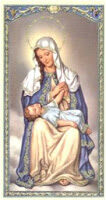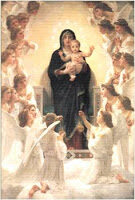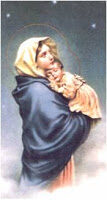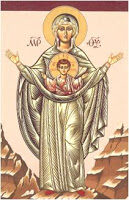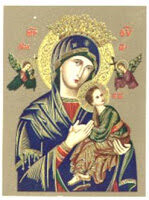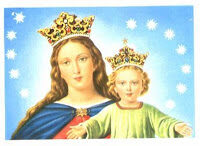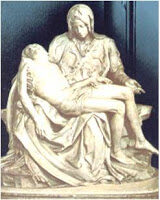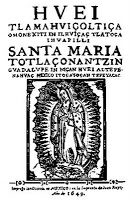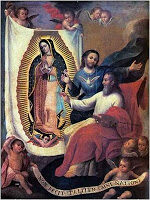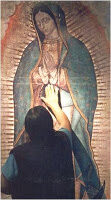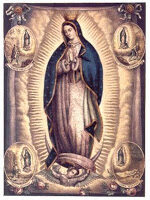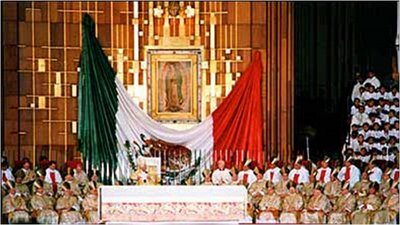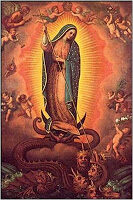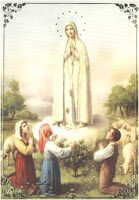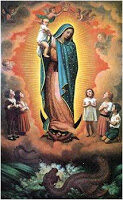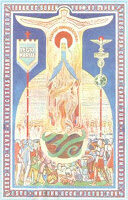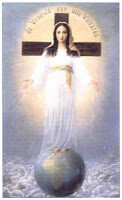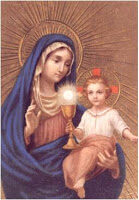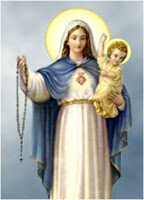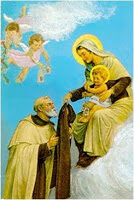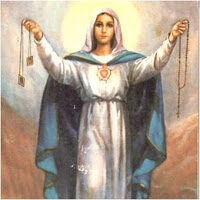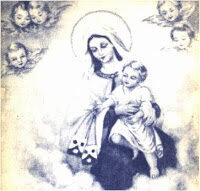This essay is parsed thusly:
An Image is Worth a Thousand Words Mary and the Infant Jesus Marian Apparitions The Rosary and the Scapular Hyper Exaltation of Images
The Biblical Point of View
In the light of this study image is defined as a carving, statue or illustration of whatever sort, which represents persons and or events found within the Judeo-Christian Scripture and traditions. In this article we will focus on Roman Catholic imagery, though our conclusions may be generally applied.
Regarding the making of images, there are varied views within Judaism and Christianity. We may define the extremes as holding to, on the one hand, the view that any and all images are blasphemous idolatry while, one the other hand, we find the view that we may use an image to enhance worship while not worshipping the image itself.
An Image is Worth a Thousand Words:
Images are meant to convey information. In the case of Judeo-Christian religious imagery they are meant to convey the truth as revealed in the Bible. Just as when the words of the Bible are printed on paper or spoken as an oral teaching they are to be accurately represented an image must be accurate or it will distort the truth as much as a corrupted printed translation of the Bible would distorts God’s word.
Images are particularly useful in teaching false doctrines because while these corruptions are not found in the Bible they can be illustrated whereby they take on a certain amount of authority.
Just as we can compare a translation of the Bible against the ancient manuscripts we must compare images with the text of the Bible.
Mary and the Infant Jesus:
Images that portray Jesus together with His mother Mary generally are of two sorts. Both times Mary is shown embracing Jesus, both times Mary is the predominant figure. In the first instance Mary is depicted holding the infant or child Jesus. In the other, Mary is depicted holding Jesus’ dead body after He is taken down off of the cross. When Mary is depicted holding Jesus as an infant she is the one shown to be in control, she is the mother, the nurturer, the teacher. The child is fully reliant upon the mother; the child is defenseless and submissive. When Mary is shown holding Jesus’ dead body she is the one suffering, she is in the care of His body, the attention is on her because although we know the story ends with the resurrection at the time, He is a dead man.
A very important thing to recognize about the infant Jesus is that there is no such thing as the infant Jesus. Jesus was an infant for as long as it takes a human to grow out of infancy, just a little over one year. Thereafter, He was a toddler, an adolescent, a teenager, and finally an adult. He died as a grown man at thirty-three years of age and when He resurrected He was still a grown man. The problem with referring to and depicting Jesus as a little infant is that it takes Him from the foreground and makes Him a dependant. Jesus is God, all powerful, eternal, and although He was all these things even as an infant, depicting Him as such makes it physiologically easier for the unbeliever to disregard Him and for the pseudo or lukewarm believer to see past Him and get caught up in exaltation of Mary or canonized saints (in this regard please consult my essays on Maryology).
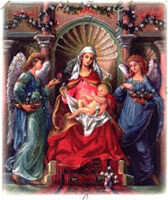
Note the crown of stars on the images on the left and right
Marian Apparitions:
Images of apparitions that attempt to pass themselves off as being Mary always show her in an unbiblical light. She is depicted with symbolism that does not pertain to her and that exalts her beyond what is revealed in the Bible.
Mary is often depicted with her foot on a serpent’s head. This comes from a mistranslation and misapplication of Genesis 3:15. The error is claiming that it is Mary who will crush the head of the serpent. In reality it is Jesus who crushes the serpent’s (satan’s) head. See my essay Will She “Crush Your Head”?
Mary is also depicted with the moon under her feet due to a misapplication that defines the woman in Revelation 12 as Mary. The New Testament of Our Lord and Savior Jesus Christ, a Vatican approved Bible, has the following footnote for Revelation 12:1-2, “A woman: this is not the Blessed Virgin, for the details of the prophecy do not fit her. The prophecy pictures the Church of the Old and New Covenant. The beams of the divine glory clothe her; the moon is beneath her feet; she is crowned with a crown of twelve stars, and she must bring forth Christ to the world. By accommodation the Church applies this verse to the Blessed Virgin” [italics in original, bold added].
Note that the footnotes admit both that the woman is not Mary and that it is attributed to her in order to accommodate the Church’s preconceived notions. For more information on this issue and to see why it is also incorrect to depict Mary with a crown on her head or with twelve stars around her head see my essay Immaculately Conceived? and Queen of Heaven?
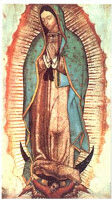
God the Father painting the allegedly miraculous image of Our Lady of Guadalupe
Mary, the woman, with the moon under her feet
Earliest rendition of the apparition story, from 118 years after the event
Images depicting the story of the apparition
Devotion to Mary
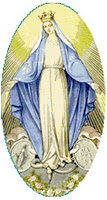
Mary crushing the serpent
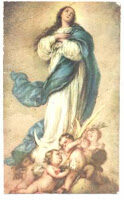
Mary, savior of children
Mary with the moon under her feet
Our Lady of Fatima
Our Lady of All Nations
The Legions of Mary
The Rosary and the Scapular:
Legend states that Mary appeared to St. Dominic in 1208 AD and gave him instructions on how to pray the rosary. Yet, in many depictions of this scene Mary is holding not only a rosary but she is shown holding the infant Jesus.
The complete Rosary consists essentially of 15 Our Fathers and 150 Hail Marys; however, the Church has divided the original Rosary into three equal parts, each consisting of 5 Our Fathers and 50 Hail Marys, and these groups are called the Joyful, Sorrowful, and Glorious Mysteries…Nowadays, when we speak of the Rosary, we usually refer to only one of the groups, that is, to one-third of the Rosary, which is the ordinary and more convenient length for recitation.1 [bold added]
Does the Vatican have the right to allow Roman Catholics to forsake Mary’s instructions and to dishonor her by falling into slothfulness, one of the seven deadly sins according to Roman Catholicism?

